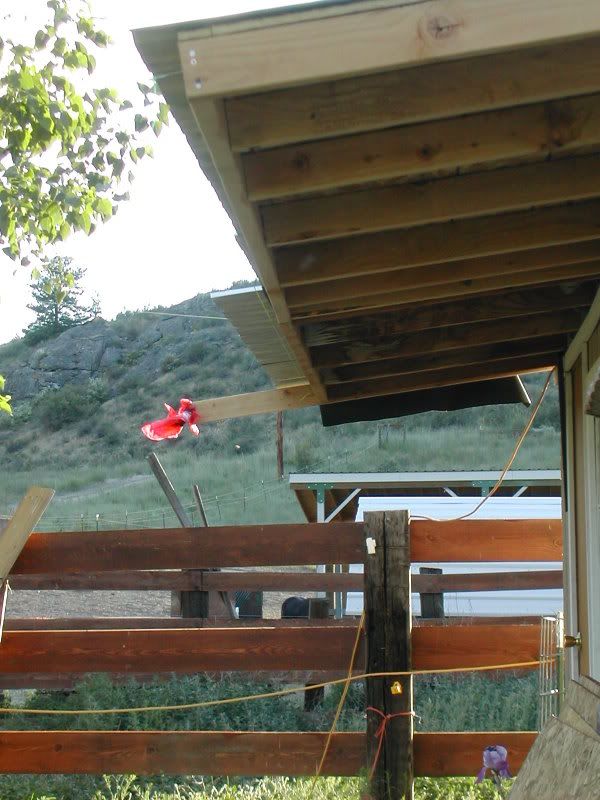Here my coop. The roof slants towards the front of the coop (there are no runs in the front though). The front is the southern side. My coop is fully insulated, including the ceiling.
The downside to this design is that the snow falls in front of the doorway. However, with a DH and a beer bribe, that is easily resolved.

My coop early this winter:

We did build a large overhang in the front:

The newest coop is the opposite slope. Not sure why DH designed it this way--maybe because it's so much smaller?
Anyway, the chickens come/go through the floor and then out the sides. There will be two large runs (one on each side, meeting the middle/back of the coop. So yes the snow will pile off the back, but it shouldn't cause any issues as the chickens will have plenty of room to avoid being smushed and the roof is slanted so much that snow really doesn't pile up on it. However if I do have any Darwin-Award-Winning chickens...it's probably better they are not being used in my breeding program!


In relation to the larger coop:

The downside to this design is that the snow falls in front of the doorway. However, with a DH and a beer bribe, that is easily resolved.

My coop early this winter:

We did build a large overhang in the front:

The newest coop is the opposite slope. Not sure why DH designed it this way--maybe because it's so much smaller?
Anyway, the chickens come/go through the floor and then out the sides. There will be two large runs (one on each side, meeting the middle/back of the coop. So yes the snow will pile off the back, but it shouldn't cause any issues as the chickens will have plenty of room to avoid being smushed and the roof is slanted so much that snow really doesn't pile up on it. However if I do have any Darwin-Award-Winning chickens...it's probably better they are not being used in my breeding program!


In relation to the larger coop:




